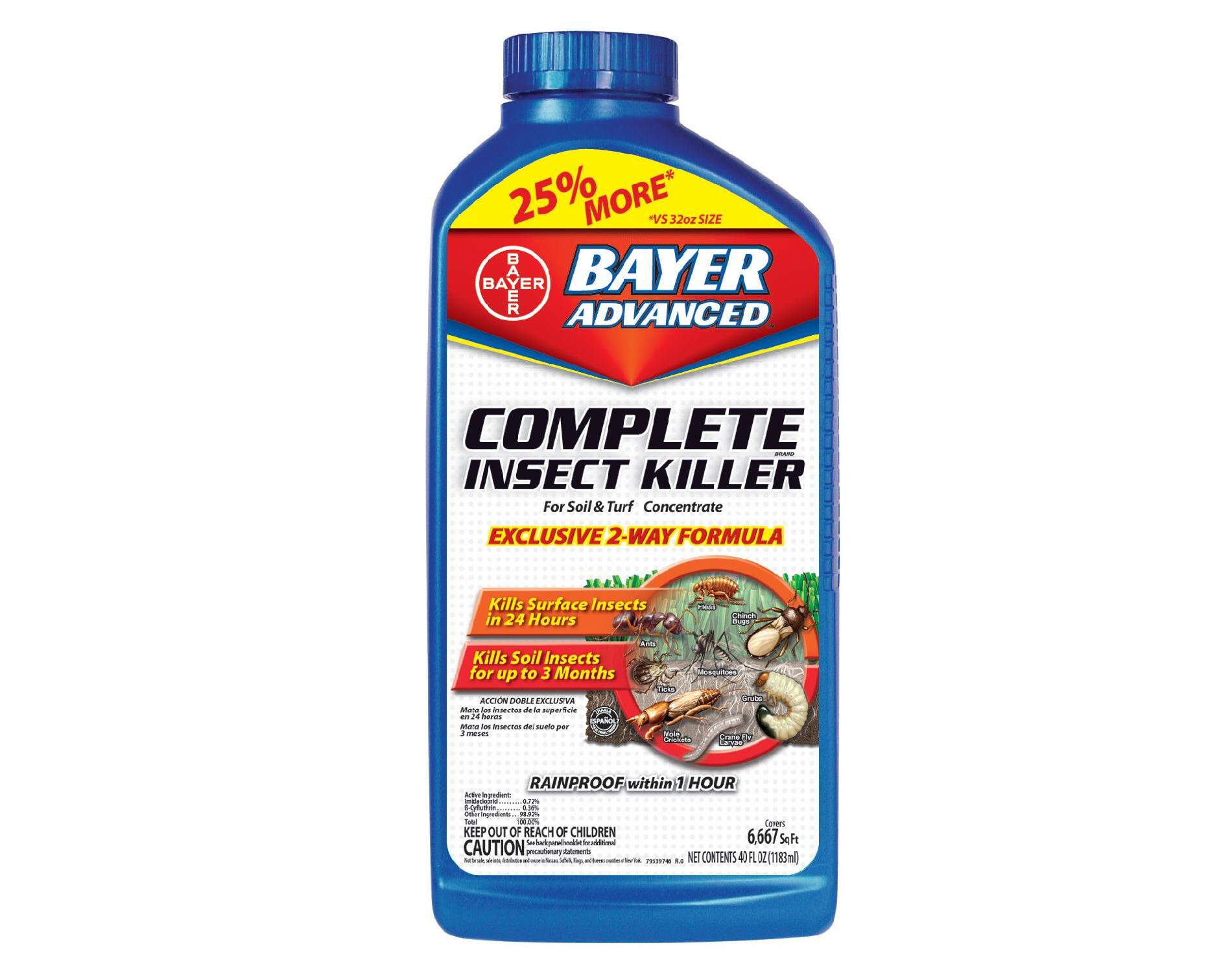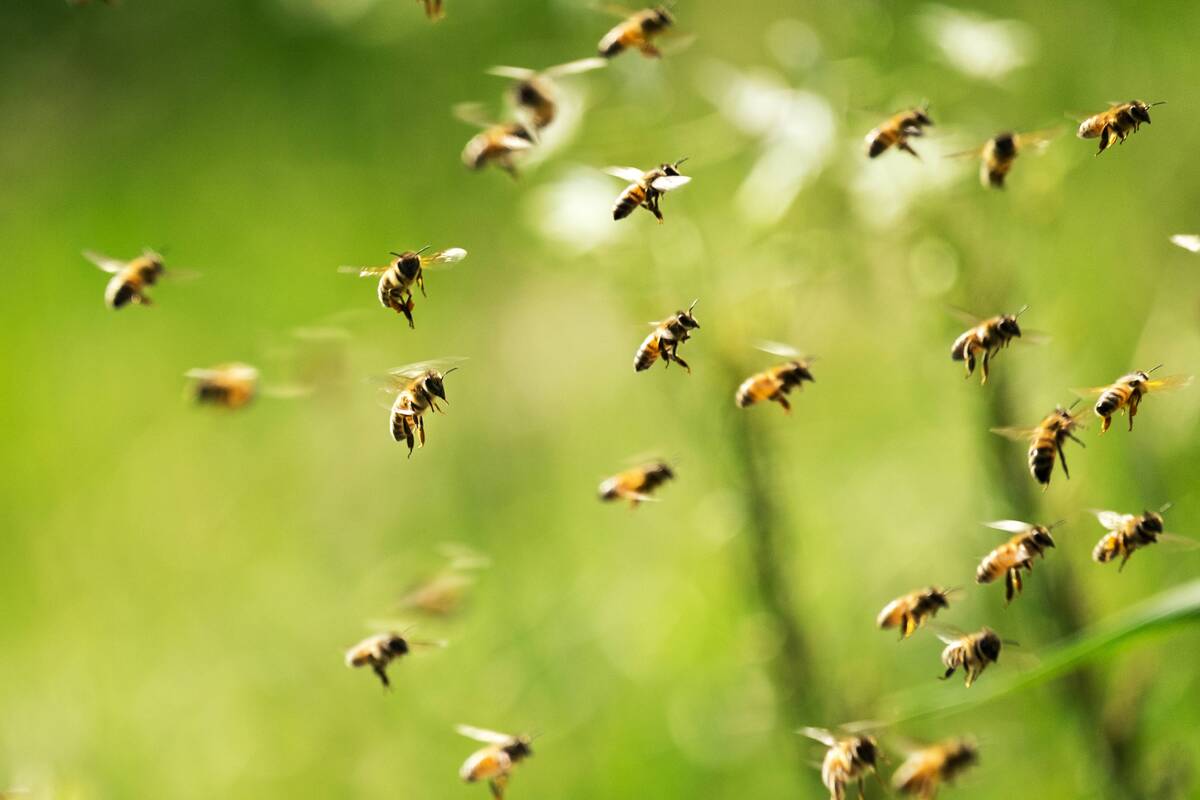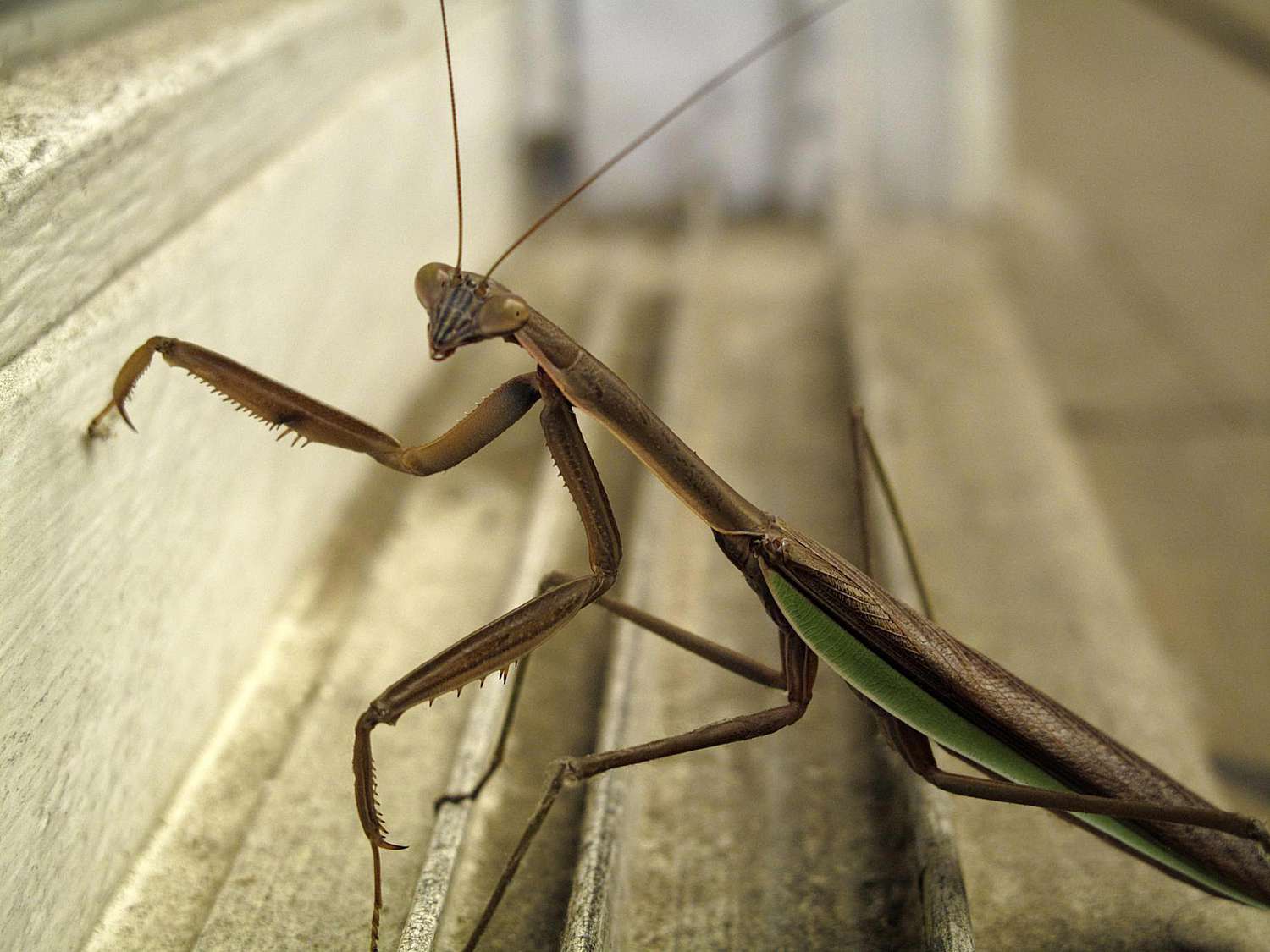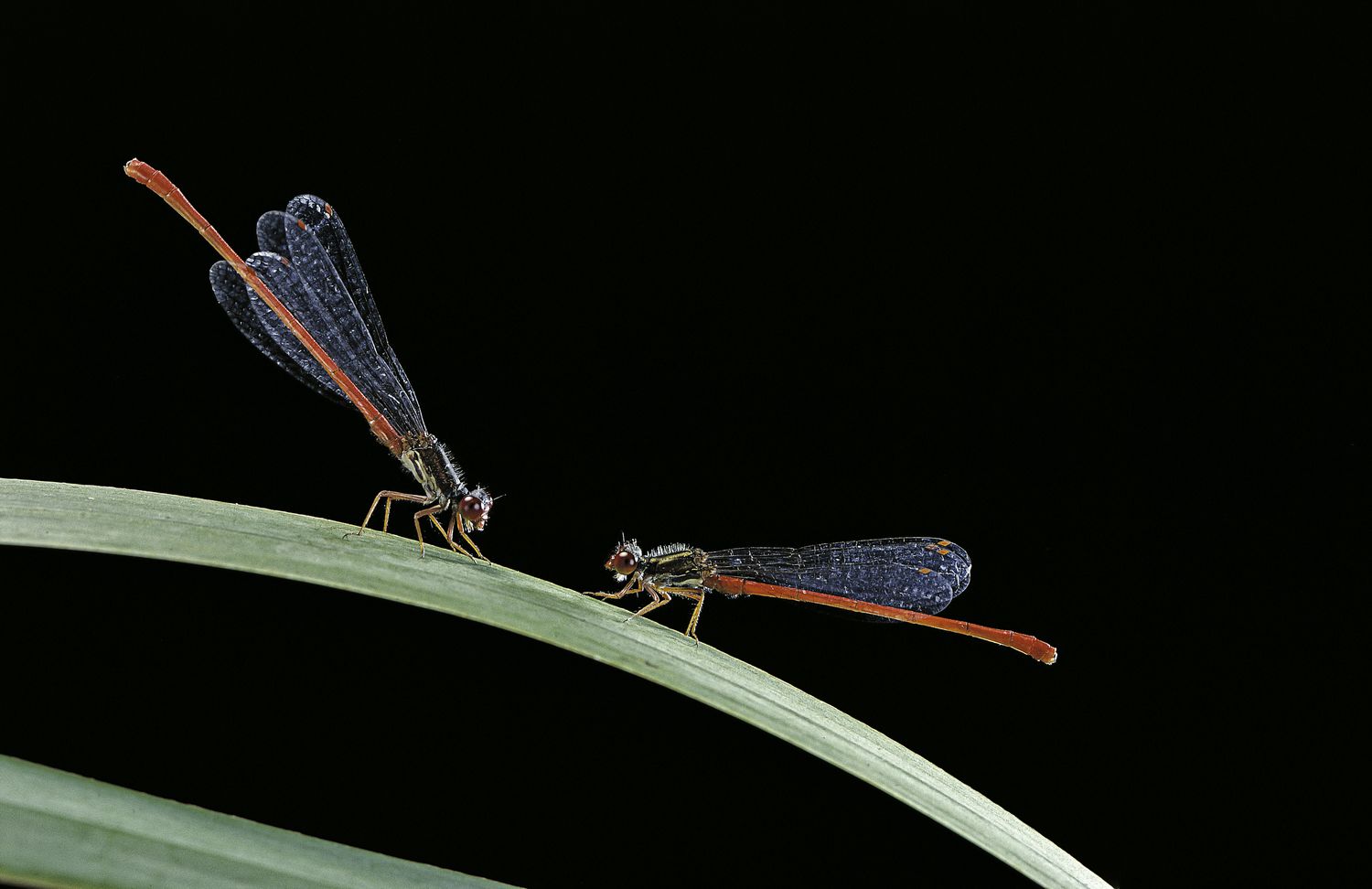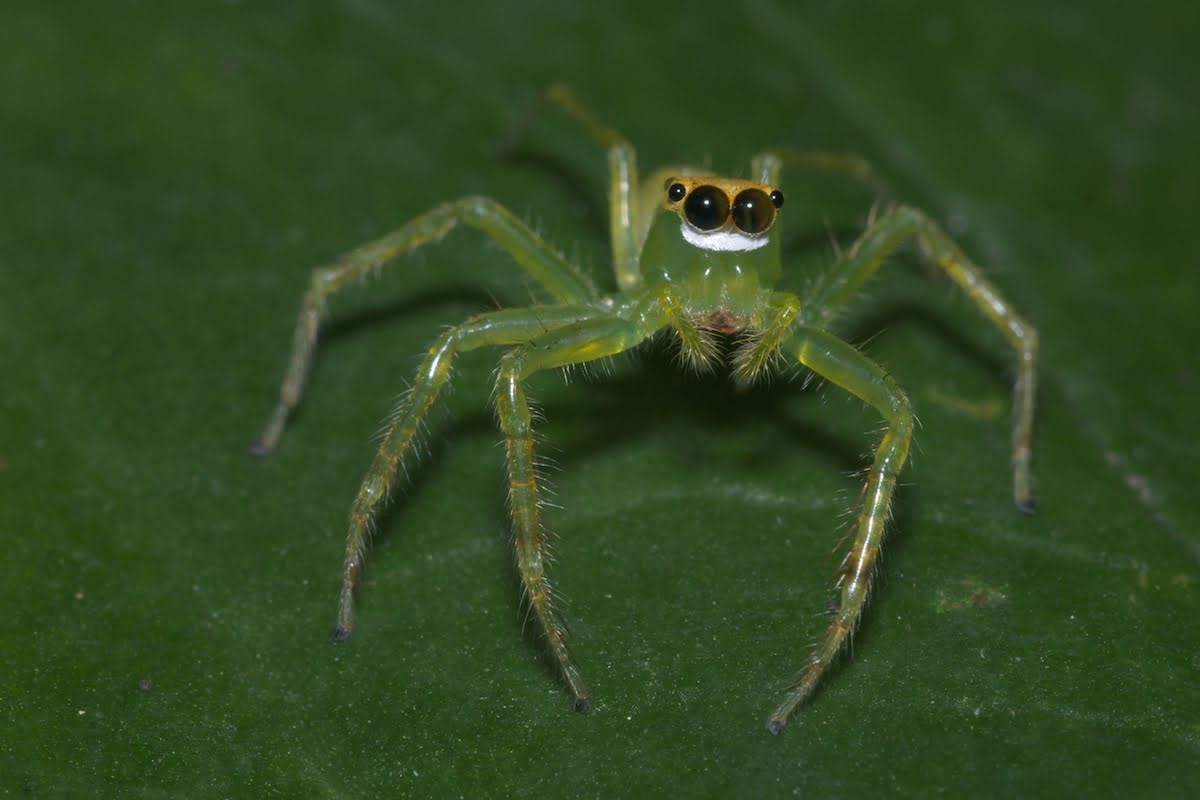Home>Gardening News and Trends>Latest News>Which Insects Go Through Complete Metamorphosis
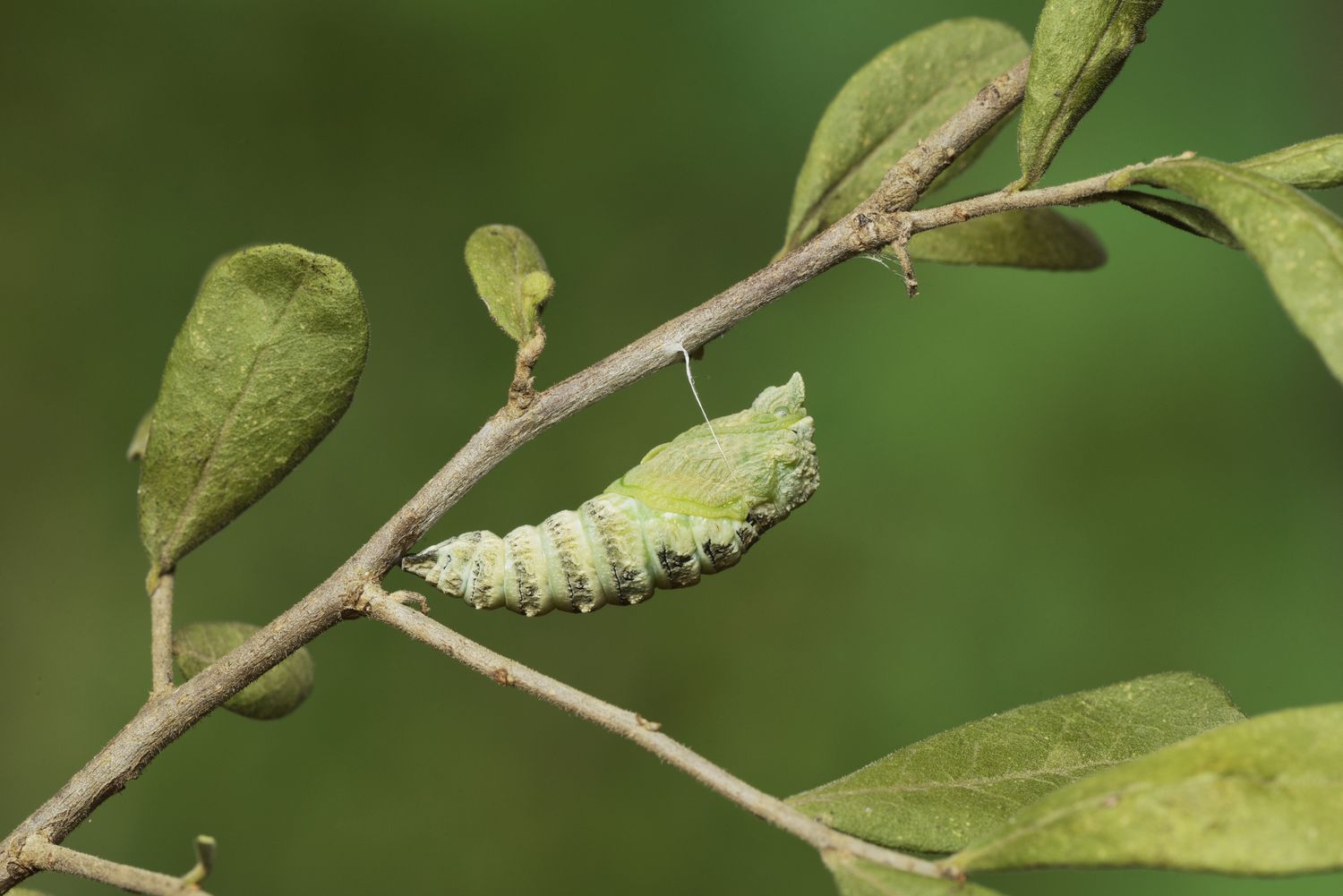

Latest News
Which Insects Go Through Complete Metamorphosis
Published: December 7, 2023
Want to know which insects go through complete metamorphosis? Stay updated with the latest news on this fascinating process.
(Many of the links in this article redirect to a specific reviewed product. Your purchase of these products through affiliate links helps to generate commission for Chicagolandgardening.com, at no extra cost. Learn more)
Table of Contents
Introduction
Welcome to the fascinating world of insects and their incredible life cycles. One of the most remarkable transformations in the insect kingdom is known as complete metamorphosis. In this article, we will explore what complete metamorphosis is, the life cycle of insects that undergo this process, examples of such insects, the benefits they gain from it, and the evolutionary significance of this phenomenon.
Metamorphosis, derived from the Greek words “meta” meaning “change” and “morphosis” meaning “form,” refers to a process of profound transformation. In the case of complete metamorphosis, insects undergo a dramatic change in their appearance, behavior, and physiology as they progress through distinct life stages. This process involves four distinct phases: egg, larva, pupa, and adult.
With complete metamorphosis, the early stages of the insect’s life are spent as a larva, which often bears little resemblance to the adult form. Larvae have unique characteristics and behaviors suited to their specific ecological niche and dietary requirements. They undergo a series of molts, shedding their exoskeleton and increasing in size before entering the next stage.
The pupal stage is a period of transition and reorganization. Inside the protective pupal case, the larval tissues break down and reassemble into the adult structure. This restructuring allows for the development of specialized adult features, such as wings, reproductive organs, and distinct body segments. The pupal stage varies in duration depending on the species, ranging from a few days to several months.
Finally, the adult stage emerges from the pupal case, fully formed and ready to fulfill its specific role in the ecosystem. The adult insect is sexually mature and capable of reproducing. In this stage, they may engage in behaviors such as mating, searching for food, and dispersing to new habitats.
Complete metamorphosis provides several advantages for insects. By having distinct larval and adult forms, insects with this life cycle can exploit different resources and occupy diverse ecological niches. Larvae often have specialized structures and behaviors that enable them to maximize resource acquisition and growth. The adult stage, on the other hand, is adapted for dispersal, reproduction, and ecological interactions.
Furthermore, by undergoing complete metamorphosis, insects can avoid competition between different life stages. The larvae and adults can occupy different habitats and utilize different food sources, reducing competition for resources within the same population. This separation of ecological roles contributes to the overall success and diversity of insects in various ecosystems.
The phenomenon of complete metamorphosis is an ancient and successful adaptation that has evolved independently in multiple insect lineages. It provides selective advantages for insects to exploit different resources and adapt to various ecological conditions.
In the following sections, we will delve deeper into the life cycle of insects that undergo complete metamorphosis and explore notable examples of these insects.
What is complete metamorphosis?
Complete metamorphosis is a process of development and transformation that certain insects undergo as they progress through their life cycle. It is characterized by distinct and dramatic changes in morphology, behavior, and physiology between different life stages: egg, larva, pupa, and adult.
The journey begins with the egg stage, where the insect lays its eggs in a suitable environment. These eggs are usually small and protected, ensuring the survival of the offspring. They provide a safe and nutrient-rich environment for the embryo to develop.
After the egg stage, the insect hatches into a larva. This larval stage is when the most significant changes occur. The larva often looks completely different from the adult form and is specialized for feeding and growth. It may have distinct body structures, such as chewing mouthparts and multiple segments, to facilitate its specific feeding habits.
Larvae are voracious eaters and consume large amounts of food to fuel their rapid growth. They undergo a series of molts, shedding their exoskeleton and growing in size. Each molt reveals a larger and more developed larva until it reaches its maximum size. Larvae may go through several instars, or developmental stages, during this process.
Once the larval stage is complete, the insect enters the pupal stage. This is a period of rest and transformation, where the larval tissues break down and rearrange themselves into the structures of the adult insect. Inside a protective casing or cocoon, the insect undergoes profound changes. Many of the larval features are broken down, and new adult structures, such as wings and reproductive organs, are formed.
The duration of the pupal stage varies from species to species. Some insects spend only a few days as pupae, while others remain in this stage for several months. During this time, the insect’s body undergoes a complete reorganization, preparing it for the final stage of its life cycle.
Finally, the adult insect emerges from the pupal case. It is fully formed and ready to engage in reproductive activities. Adults have distinct body structures, including functional wings and specialized mouthparts, depending on their species and ecological niche. They are capable of finding mates, reproducing, and dispersing to new habitats.
Complete metamorphosis is a unique and highly successful strategy that has evolved in insects from various orders such as Lepidoptera (butterflies and moths), Diptera (flies), Coleoptera (beetles), and Hymenoptera (wasps, bees, ants).
Understanding the process of complete metamorphosis provides valuable insights into the complex life cycles of insects and their remarkable ability to adapt to diverse environments.
Life cycle of insects with complete metamorphosis
The life cycle of insects with complete metamorphosis follows a distinct pattern consisting of four main stages: egg, larva, pupa, and adult. Each stage has its own unique characteristics and functions, contributing to the overall success and survival of the insect species.
The first stage of the life cycle is the egg stage. In this stage, the female insect lays eggs in a suitable environment, which can vary depending on the species. The eggs are often laid in clusters or in special structures such as cocoons or egg cases for protection. This stage serves as a means of reproduction and establishing the next generation of insects.
After the eggs are laid, they enter the larval stage. Larvae are the active feeding stage of the insect’s life cycle. They are typically voracious eaters and have specialized mouthparts for consuming their preferred food sources. Larvae vary greatly in appearance and behavior across different insect species. They may be worm-like, caterpillar-like, or grub-like, depending on the specific group they belong to.
Larvae go through several molts during their development, shedding their exoskeletons and growing larger after each molt. The length and number of larval instars, or stages between molts, can vary significantly between species. Each instar allows for further growth, development, and preparation for the next stage of the life cycle.
When the larval stage is complete, the insect enters the pupal stage. This stage is characterized by a period of rest and transformation. Inside a protective casing or cocoon, the insect undergoes a series of developmental changes. The larval tissues break down and reorganize to form the structures of the adult insect.
During the pupal stage, the insect’s body undergoes a complete metamorphosis. This includes the formation of adult features such as wings, reproductive organs, and distinct body segments. The duration of the pupal stage can vary greatly depending on the species, environmental conditions, and other factors. It is a critical stage for the development of the adult insect.
Finally, the adult stage, also known as the imago stage, emerges from the pupal case. The adult insect is fully formed and ready to fulfill its specific ecological role and reproductive duties. This stage is often sexually mature and capable of mating and producing offspring. Adults may have specialized structures, behaviors, and adaptations that enable them to survive, find mates, disperse to new habitats, and contribute to the ongoing survival of the species.
The life cycle of insects with complete metamorphosis is a remarkable process that allows for distinct stages of development and specialization. Each stage serves a specific purpose and contributes to the overall success and diversity of insect species in various ecosystems.
Examples of insects that undergo complete metamorphosis
Complete metamorphosis is a widespread phenomenon in the insect world, observed in numerous species across different orders and families. Let’s explore some notable examples of insects that undergo this remarkable transformation.
1. Butterflies and Moths (Order Lepidoptera): Perhaps the most well-known group of insects with complete metamorphosis, butterflies and moths start their life as eggs laid on plants. The hatched larvae, also known as caterpillars, are voracious eaters and have distinct body segments and specialized mouthparts. They go through several molts before entering the pupal stage. Inside a protective chrysalis or cocoon, the caterpillar undergoes a transformative process, eventually emerging as a beautiful adult butterfly or moth.
2. Beetles (Order Coleoptera): Beetles are a diverse group of insects known for their hard exoskeleton and diverse lifestyles. Beetle larvae, often referred to as grubs or larvae, have distinct body shapes and behaviors depending on their species. They can be found in various habitats, such as soil, wood, or water, and play important roles in ecological processes like decomposition. After undergoing complete metamorphosis in a pupal case, beetles emerge as adults with hardened forewings called elytra.
3. Flies (Order Diptera): Flies, including houseflies, mosquitoes, and fruit flies, also undergo complete metamorphosis. Fly larvae, commonly known as maggots, are often associated with feeding on decaying organic matter. Their distinctive body shape and specialized mouthparts make them efficient at their ecological niche. The pupal stage of flies, called the pupa or the “pupa in a case,” is a transformative period where the larvae reorganize into the adult form.
4. Wasps, Bees, and Ants (Order Hymenoptera): Hymenopteran insects, such as wasps, bees, and ants, also exhibit complete metamorphosis. In these insects, the larvae are commonly referred to as grubs or larvae. They have diverse feeding strategies and often play essential roles in pollination, parasitism, or colony organization. The pupal stage of hymenopteran insects occurs inside a protective cocoon or cell, allowing for the development of adult structures critical for their specific ecological functions.
5. Fleas (Order Siphonaptera): Fleas, parasitic insects that infest mammals and birds, also undergo complete metamorphosis. The larval stage of fleas occurs in the bedding or habitat of their host, where they feed on organic debris and the feces of adult fleas. After the larval stage, fleas enter the pupal stage, where they undergo significant changes to transform into adult fleas capable of finding and feeding on their host.
These are just a few examples of the wide array of insect species that undergo complete metamorphosis. Each group has its unique attributes and behaviors associated with their specific habitats, ecological roles, and survival strategies. Understanding the diversity and intricacies of insects with complete metamorphosis allows us to appreciate the remarkable adaptations that have evolved in the insect world.
Benefits of complete metamorphosis for insects
Complete metamorphosis provides several key benefits for insects and has contributed to their evolutionary success and adaptability. Let’s explore some of the advantages that this process offers.
1. Resource Partitioning: Complete metamorphosis allows for resource partitioning between different life stages of insects. During the larval stage, insects have specialized structures and behaviors that enable them to efficiently consume and extract nutrients from specific food sources. This differentiation in feeding strategies reduces competition among individuals within the same population for limited resources.
2. Ecological Niche Exploitation: The distinct adaptations and behaviors of larvae and adults enable insects with complete metamorphosis to exploit different ecological niches. Larvae often occupy specific microhabitats and feed on different food sources compared to their adult counterparts. This allows insects to diversify their resource utilization and increase their chances of survival in various environments.
3. Avoidance of Interference Competition: By separating the life stages, complete metamorphosis helps insects avoid interference competition. Larvae and adults occupy different habitats, reducing direct competition for resources among individuals. This separation allows each life stage to thrive without being hindered by competition from the other stage.
4. Improved Dispersal: The pupal stage of complete metamorphosis provides a period of rest and protection while the insect undergoes significant developmental changes. This stage often enables improved dispersal as the adult insect emerges with fully developed wings and specialized physiology. With the capability of flying or active moving, adults can disperse to new habitats, increasing their chances of finding suitable resources and avoiding overcrowding in their original location.
5. Reduced Vulnerability: The pupal stage offers protection from environmental hazards and predation. Encased in a protective pupal case or cocoon, insects are shielded from various threats, such as unfavorable weather conditions or potential predators. This period of relative safety allows for the development and differentiation of adult features without the immediate risk of harm.
6. Enhanced Reproductive Success: Complete metamorphosis allows for the allocation of energy and resources specific to reproduction in adults. Unlike larvae, adults are equipped with specialized reproductive organs and behaviors necessary for successful mating and reproduction. This specialization improves the efficiency of reproduction and increases the overall fitness and reproductive success of the species.
These benefits of complete metamorphosis have contributed to the remarkable diversity and adaptability of insects in various ecosystems. By exploiting different resources, occupying distinct ecological niches, and reducing competition among life stages, insects have thrived and evolved to become one of the most successful and abundant groups of organisms on Earth.
Evolutionary significance of complete metamorphosis
Complete metamorphosis has played a vital role in the evolutionary success and diversification of insects. This phenomenon has numerous evolutionary advantages and has contributed to the adaptive radiation and ecological dominance of insects in various habitats. Let’s explore the evolutionary significance of complete metamorphosis.
1. Expansion of Ecological Niches: Complete metamorphosis has allowed insects to occupy a wide range of ecological niches. By having distinct larval and adult stages with specialized structures and behaviors, insects can exploit different resources and adapt to diverse environmental conditions. This expansion of ecological niches has contributed to their evolutionary success and ability to colonize various habitats on land, in water, and even in the air.
2. Enhanced Adaptability: The ability of insects to undergo complete metamorphosis has provided them with an increased capacity for adaptation to changing environmental conditions. The larval stage allows insects to maximize growth and development in favorable conditions, while the pupal stage provides a period of rest and protection during potentially adverse circumstances. This ability to adjust their life history strategies in response to environmental cues has given insects a remarkable advantage in adapting to diverse habitats and ensuring their survival.
3. Reduction of Interspecific Competition: Complete metamorphosis has helped mitigate interspecific competition within insect populations. By separating the ecological roles and resource requirements of larvae and adults, competition for limited resources within a population is reduced. This reduction in competition enables the coexistence of multiple insect species in the same habitat, promoting biodiversity and facilitating the partitioning of resources among different insect groups.
4. Facilitation of Speciation: The process of complete metamorphosis has also facilitated speciation in insects. The distinct life stages allow for reproductive isolation between populations that may occur in different habitats or have different ecological requirements. Genetic divergence can accumulate during the larval and pupal stages, leading to the evolution of distinct adult forms adapted to specific environments or ecological niches. This reproductive isolation can ultimately lead to the formation of new species over time.
5. Defense against Predation: The pupal stage, where the insect is encased in a protective case or cocoon, provides defense against predation. This protective mechanism allows the insect to undergo its critical transformation into an adult form without the immediate risk of being preyed upon. The pupal stage acts as a shield, protecting the developing insect from potential predators and increasing its chances of survival to adulthood.
Understanding the evolutionary significance of complete metamorphosis provides insight into the incredible adaptive capabilities of insects. This process has supported the colonization of diverse habitats, facilitated speciation, and contributed to the remarkable success and ecological dominance of insects in the natural world.
Conclusion
The process of complete metamorphosis is a fascinating and evolutionary significant phenomenon observed in insects. It involves a profound transformation from egg to larva, pupa, and ultimately, adult. This remarkable life cycle brings numerous benefits to insects, including resource partitioning, ecological niche exploitation, reduced competition, enhanced dispersal, and increased reproductive success.
By undergoing complete metamorphosis, insects can occupy different ecological niches, exploit diverse resources, and reduce competition between life stages. Larvae and adults have unique adaptations and behaviors that allow them to maximize their survival and reproductive success in their respective stages. The pupal stage provides a period of rest and protection, enabling the development of fully formed adults with specialized structures and physiological adaptations.
The evolutionary significance of complete metamorphosis cannot be understated. It has played a crucial role in the rapid diversification and adaptive radiation of insects. The ability to occupy various habitats, exploit different resources, and undergo reproductive isolation during the metamorphic process has allowed insects to adapt to changing environmental conditions and colonize diverse ecosystems.
By understanding the intricate details and benefits of complete metamorphosis, we gain a deeper appreciation for the remarkable adaptations and evolutionary success of insects. These small but extraordinary creatures have conquered the Earth’s vast range of environments, contributing to the incredible biodiversity and ecological balance of our planet.
As we continue to study and explore the world of insects, further research into the mechanisms and evolutionary factors driving complete metamorphosis will provide valuable insights into the intricate workings of nature and the amazing abilities of these fascinating creatures.
